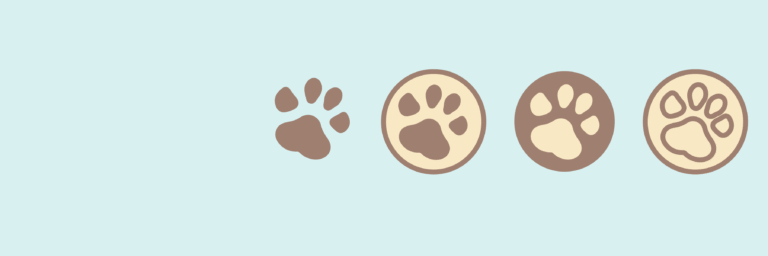
Bringing home a new puppy is an exciting adventure! While house training might seem challenging at first, a little patience and consistency make the process much easier. With the right methods, you’ll notice progress much quicker than you think. The goal is to keep every step simple and stress-free for both you and your new puppy.
Accidents are completely normal during the early days. Every puppy figures things out at their own pace. I’ve helped many friends navigate house training, and breaking down the process into easy, repeatable routines always works best. This detailed guide gives you everything you need, even if this is your very first puppy. You’ll learn how to set your puppy up for success, avoid common pitfalls, and handle setbacks calmly. Now, let’s jump into the essentials of house training!
Step 1: Create a Consistent Schedule
Puppies thrive on routine because it helps them quickly understand what’s expected. Most puppies need bathroom breaks right after waking up, after meals and drinks, after playtime, and right before bedtime. Having regular times for food, play, and potty breaks builds good habits that stick.
Typical Puppy Potty Schedule:
- First thing each morning
- After naps
- Right after eating or drinking
- After playtime
- Before bedtime
Generally, puppies need to go outside every 2 to 3 hours during the day until they can hold it longer as they grow.
Step 2: Choose One Potty Spot Outside
Picking a single outdoor bathroom area helps your puppy learn quickly. Always taking your puppy to the same spot allows them to recognize familiar scents and signals that it’s time to potty.
Tips for Keeping it Simple:
- Always head straight to the same spot.
- Use a consistent phrase like “go potty” as your puppy explores.
- Stay patient and give your puppy time to do their business.
- Avoid wandering until they’ve finished. This clearly communicates the purpose of the outing.
Step 3: Recognize Your Puppy’s Signals
Understanding your puppy’s subtle hints is essential. Dogs usually give signs like sniffing around, circling, whining, pacing, or suddenly moving toward the door. Noticing these signals early and quickly taking your puppy outside greatly reduces indoor accidents.
Common Signs Your Puppy Needs to Go:
- Sniffing the floor and circling
- Whining or small barks
- Restless pacing or lingering near the door
- Suddenly stopping play or seeming distracted
If you spot these signs, promptly take your puppy outside. Quick reactions are key to successful potty training.
Step 4: Reward Good Habits Every Time
Positive reinforcement is powerful in puppy training. Always carry small treats with you and give one to your puppy right after they successfully potty outdoors. Adding cheerful praise reinforces good behavior, making your puppy excited about getting it right.
Ways to Reinforce Potty Training:
- Always have treats ready during outings.
- Give immediate praise and treats after successful potty breaks.
- Add extra affection or playtime as bonus rewards.
Immediate rewards reinforce the correct connection, speeding up your puppy’s understanding.
Step 5: Stay Calm During Accidents
Accidents happen, and that’s perfectly normal. Your calm response makes all the difference. Avoid punishment, yelling, or shaming, as these can confuse or upset your puppy. Instead, if you see an accident starting, gently pick up your puppy and take them to the right spot.
Proper Cleanup:
- Use enzyme-based cleaners to remove odors completely.
- Block off areas prone to accidents if needed.
- Adjust your schedule if accidents continue to happen.
Keeping your home relaxed helps your puppy stay comfortable and confident while learning.
Step 6: Crate Training as an Additional Tool
Using a crate provides your puppy with a cozy and safe area. Puppies naturally prefer to keep their sleeping spaces clean, making crates an excellent tool for house training. Ensure the crate is comfortable, large enough for your puppy to move comfortably, but not so big that they use a corner for potty breaks.
Crate Training Tips:
- Feed your puppy inside the crate to create positive associations.
- Take your puppy directly outside after crate time.
- Keep the crate a positive, comforting space, not for punishments or time-outs.
Your puppy will soon come to view the crate as their special safe haven.
Step 7: Gradually Give More Freedom
Once your puppy shows consistent improvement and fewer accidents, slowly grant them more indoor freedom. Start by expanding access to one or two rooms under careful supervision. Gradual increases in space help build confidence without overwhelming your puppy.
Expanding Freedom Safely:
- Puppy-proof new areas by removing temptations.
- Continue monitoring for potty signals closely.
- Keep your established routine.
If accidents happen again, simply restrict access temporarily and try expanding again after a few days.
Common Questions & Troubleshooting:
Why is my puppy still having accidents after several weeks?
Bladder control takes time to develop. Every puppy learns at their own pace. Ensure you’re providing plenty of bathroom breaks. If issues continue, speak with your vet to rule out health concerns.
What if my puppy only goes potty indoors?
Return to basics with more frequent outdoor trips, close supervision indoors, and plenty of rewards for outdoor successes. Stay consistent to rebuild good habits.
Are potty pads helpful?
Potty pads can help in apartments or when you’re away longer than your puppy can comfortably wait. However, pads may delay outdoor potty training. If you use them, gradually transition fully outdoors.
Next Steps to a Happier, House-Trained Puppy:
Every puppy is unique, which makes the training journey special. Celebrate small victories and be patient with the learning process. With consistent effort and positivity, your puppy will learn quickly, reducing stress for both of you.
Your Puppy House Training Checklist:
- Keep a predictable daily schedule.
- Stay alert for potty signals.
- Reward successful potty breaks immediately.
- Clean accidents calmly and thoroughly.
- Use a crate positively.
- Gradually allow more freedom indoors.
What’s working for you and your puppy? Feel free to share your experiences or ask questions. House training is easier when shared!
Author Note: Kay has raised and trained multiple dogs over the years and shares practical, compassionate advice from personal experience. This post reflects personal guidance, not veterinary advice. If you have medical concerns about your dog, always consult your veterinarian.
Helpful Resource: Learn more about puppy development from the American Veterinary Medical Association.

